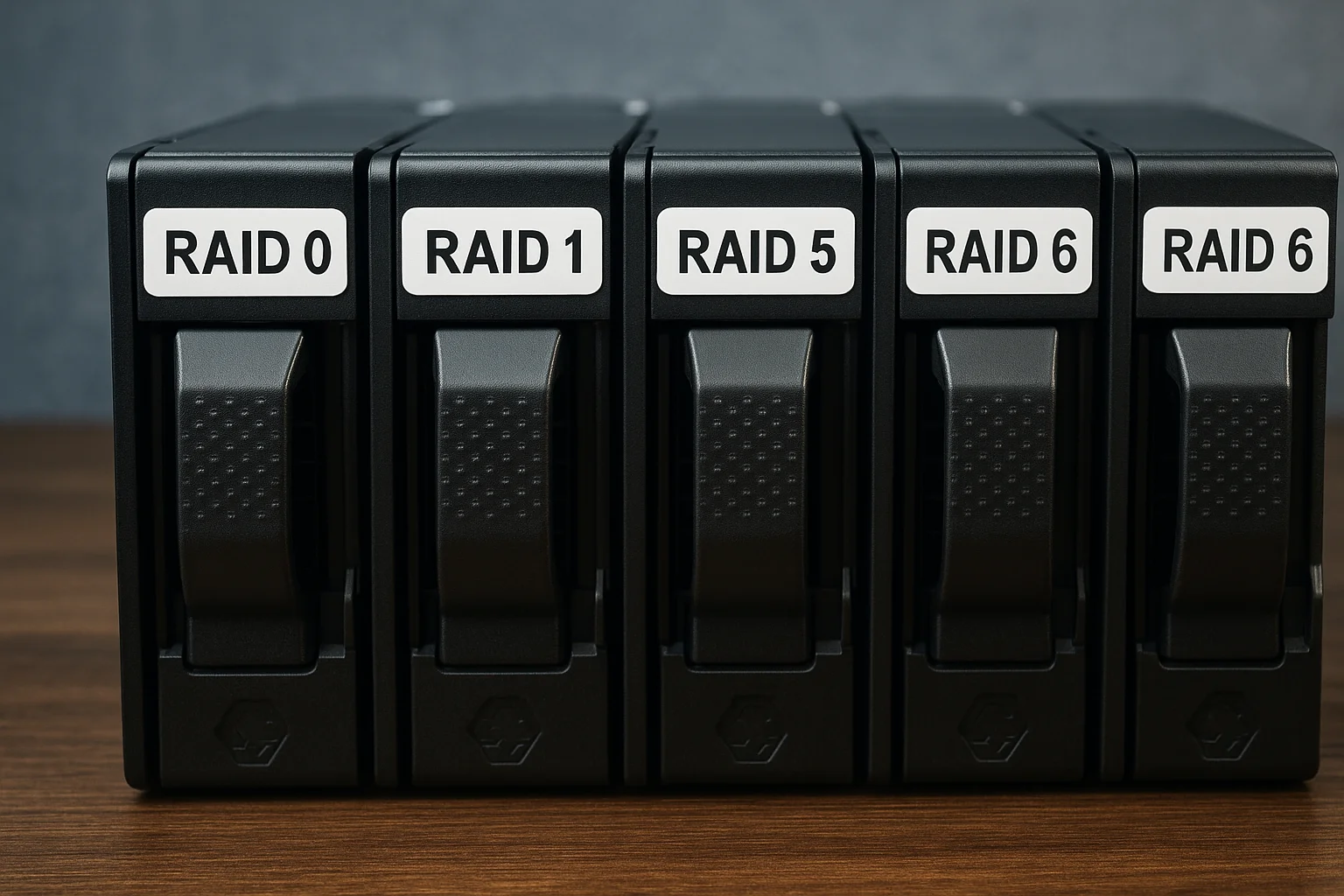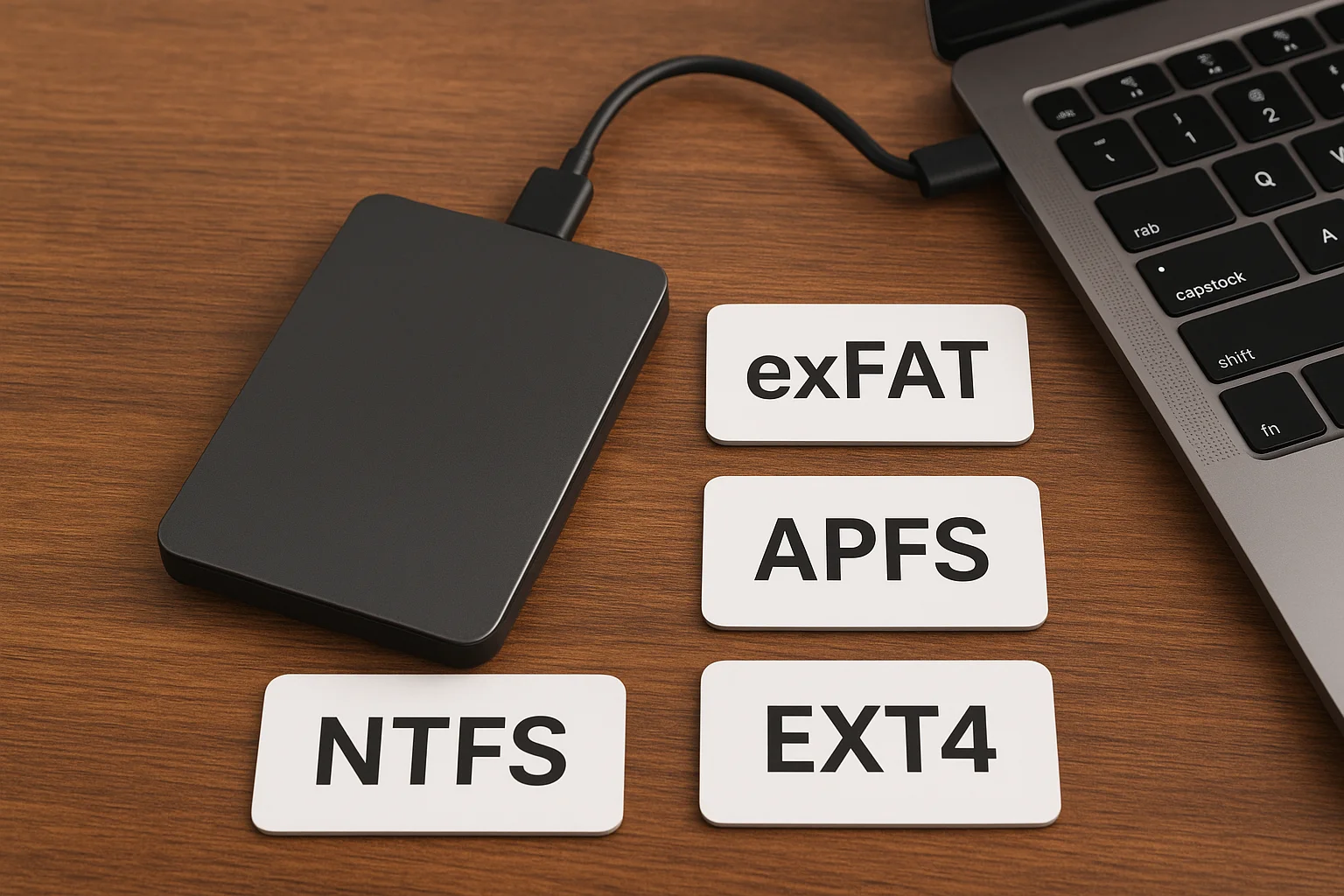Understanding RAID: An Introduction
RAID, which stands for Redundant Array of Independent Disks, is a data storage technology that combines multiple physical drives into a single logical unit. The primary goals of RAID are to improve performance, increase data redundancy, or sometimes both, depending on the RAID level implemented.
Originally designed to provide fault tolerance by distributing data across several disks, RAID has evolved to serve different needs such as boosting read and write speeds or ensuring data availability even when hardware fails. This makes RAID especially valuable in environments where data integrity and uptime are critical, such as in servers, enterprise storage, and even some high-performance personal computers.
At its core, RAID uses techniques like striping, mirroring, and parity to manage how data is stored and protected across the disks:
- Striping splits data into blocks and spreads them across multiple disks, increasing speed but typically lacking redundancy.
- Mirroring duplicates the same data onto two or more disks, providing high fault tolerance but at the cost of storage efficiency.
- Parity involves storing extra data that can be used to recover information if one or more disks fail, balancing redundancy and usable storage space.
The choice of RAID level depends heavily on the specific needs of the user or organization. Factors such as the acceptable risk of data loss, desired read/write performance, available storage capacity, and budget constraints all play a role. Some RAID configurations focus on maximizing speed with minimal redundancy, while others prioritize data protection even if performance or capacity is reduced.
It’s also important to note that RAID is not a substitute for regular backups. While certain RAID levels provide resilience against hardware failures, they do not protect against data corruption, accidental deletion, or catastrophic events like fire or theft. Implementing RAID alongside a robust backup strategy is essential for comprehensive data security.
RAID 0: Striping for Maximum Performance
RAID 0, commonly referred to as striping, is designed primarily to boost storage performance by splitting data evenly across multiple disks. Unlike other RAID levels, RAID 0 does not provide any form of redundancy or fault tolerance—its main goal is to maximize read and write speeds.
In a RAID 0 array, data is divided into small blocks called stripes, which are then written across all disks in the array. For example, with two disks in RAID 0, the first block of data is written to disk 1, the second block to disk 2, the third to disk 1 again, and so forth. This parallelism allows simultaneous data access, dramatically increasing throughput compared to a single drive.
The performance gain with RAID 0 is especially noticeable in tasks requiring large, sequential read and write operations, such as video editing, gaming, or working with large databases. Because multiple disks work in parallel, the theoretical throughput scales almost linearly with the number of drives involved.
However, the lack of redundancy means that if one disk fails, all data in the array is lost. This is because parts of each file are scattered across all disks without any backup. The overall reliability of RAID 0 decreases as you add more disks since the chance of failure is cumulative.
RAID 0 is often used when performance is prioritized over data protection, such as in temporary storage environments or scratch disks where speed is critical but data loss is acceptable. It is also common in setups where the data is already backed up elsewhere.
Another consideration is that RAID 0 arrays require at least two disks, and all disks should ideally be of the same size and speed to avoid bottlenecks or wasted space. The total usable capacity of a RAID 0 array equals the sum of all disk capacities since no storage is reserved for redundancy.
RAID 1: Mirroring for Data Redundancy
RAID 1, often called mirroring, focuses on data protection by creating an exact copy of all data on two or more disks. Every write operation duplicates the data simultaneously onto each disk in the array, ensuring that if one disk fails, the other(s) continue to provide an intact copy of the data.
The key advantage of RAID 1 is its high fault tolerance. Since the data exists in duplicate, the system can immediately switch to the remaining healthy disk(s) without downtime or data loss. This makes RAID 1 an ideal choice for critical systems where availability and data integrity are paramount.
Unlike RAID 0, RAID 1 does not improve performance in a significant way, although some implementations may offer faster read speeds by reading data from multiple disks in parallel. Write speeds, however, are typically the same as a single disk because data must be written identically to all mirrored drives.
From a storage efficiency perspective, RAID 1 has a major drawback: the usable storage capacity is effectively halved since each piece of data is duplicated. For example, two 1TB drives in RAID 1 provide only 1TB of usable space.
RAID 1 setups generally require a minimum of two disks, but can sometimes be extended to more, creating multiple mirrors for even greater redundancy. However, the most common implementation involves just two disks, balancing cost with data protection.
It's important to note that while RAID 1 protects against hardware failure, it does not safeguard against issues like accidental deletion, file corruption, or malware attacks, since these changes are mirrored instantly across all drives. Therefore, it is essential to combine RAID 1 with a robust backup strategy.
RAID 5: Balanced Performance and Redundancy
RAID 5 combines the advantages of data striping with distributed parity to offer a balanced mix of improved performance, efficient storage utilization, and fault tolerance. This configuration requires at least three disks to implement.
In RAID 5, data blocks and parity information are striped across all disks in the array. The parity is a form of error correction data that allows the system to rebuild lost information if a single disk fails. Unlike RAID 1’s full duplication, parity data is distributed evenly, which maximizes usable storage capacity compared to simple mirroring.
This approach means that RAID 5 can tolerate the failure of one disk without losing any data, making it a popular choice for environments where both data protection and cost efficiency are important. Upon a disk failure, the system enters a degraded mode but continues operating by reconstructing data on-the-fly using parity from the remaining disks.
Performance-wise, RAID 5 delivers strong read speeds because data is striped and accessed in parallel across multiple drives. However, write performance can be slower compared to RAID 0 or RAID 1 due to the overhead of calculating and writing parity data each time a write occurs.
The usable capacity of a RAID 5 array is the total capacity of all disks minus the capacity of one disk, which is reserved for parity. For example, in an array of four 1TB disks, the total usable space is 3TB, with 1TB used for parity distribution.
While RAID 5 provides good fault tolerance, it is not immune to risks. The process of rebuilding data after a disk failure is resource-intensive and increases the chance of encountering another disk failure during rebuild, which could result in data loss. Therefore, RAID 5 is generally recommended when using high-quality, reliable disks and in systems where quick replacement and rebuild are feasible.
RAID 6: Enhanced Fault Tolerance with Double Parity
RAID 6 builds upon the foundation of RAID 5 by adding an extra layer of protection through double distributed parity. This means that data is striped across multiple disks along with two separate parity blocks, allowing the array to withstand the failure of two disks simultaneously without data loss. To implement RAID 6, a minimum of four disks is required.
The addition of a second parity block significantly increases fault tolerance compared to RAID 5, making RAID 6 especially suitable for large storage arrays where the risk of multiple disk failures during rebuilds is higher. This is particularly important as modern high-capacity drives take longer to rebuild, increasing the vulnerability window.
While RAID 6 shares many characteristics with RAID 5, the presence of double parity impacts performance. Read speeds remain strong due to data striping, but write speeds are slower compared to RAID 5 because the system must calculate and write two sets of parity data for every write operation. This added complexity introduces more processing overhead.
Storage efficiency in RAID 6 is lower than in RAID 5, as the equivalent capacity of two disks is reserved for parity. For example, in a six-disk array with 1TB drives, usable storage would be 4TB, with 2TB dedicated to parity data.
RAID 6 is often favored in enterprise environments or critical systems where maximized data availability is necessary and where the consequences of data loss or downtime are severe. Its ability to handle dual disk failures provides peace of mind, especially in scenarios with large-scale drives or delayed maintenance.
It is important to remember that despite its high fault tolerance, RAID 6 still does not replace the need for regular backups, as it cannot protect against issues like data corruption, human error, or catastrophic events. Combining RAID 6 with a comprehensive backup and disaster recovery plan ensures the highest level of data security.
Summary Table: Comparing RAID 0, RAID 1, RAID 5, and RAID 6
| RAID Level | Minimum Disks | Data Protection | Performance | Storage Efficiency | Fault Tolerance | Use Cases |
|---|---|---|---|---|---|---|
| RAID 0 | 2 | No redundancy | Maximum read/write speed | 100% (sum of all disks) | None (any disk failure causes data loss) | High-performance tasks, temporary storage |
| RAID 1 | 2 | Full mirroring | Read speed improved, write speed similar to single disk | 50% (half of total capacity) | Can survive 1 disk failure | Critical data requiring high availability |
| RAID 5 | 3 | Distributed parity | Good read speed, slower writes (due to parity overhead) | (N-1)/N, e.g. 75% for 4 disks | Can survive 1 disk failure | Balanced performance and redundancy for general use |
| RAID 6 | 4 | Double distributed parity | Good read speed, slower writes (higher parity overhead) | (N-2)/N, e.g. 66% for 6 disks | Can survive 2 disk failures | High fault tolerance, critical enterprise systems |






